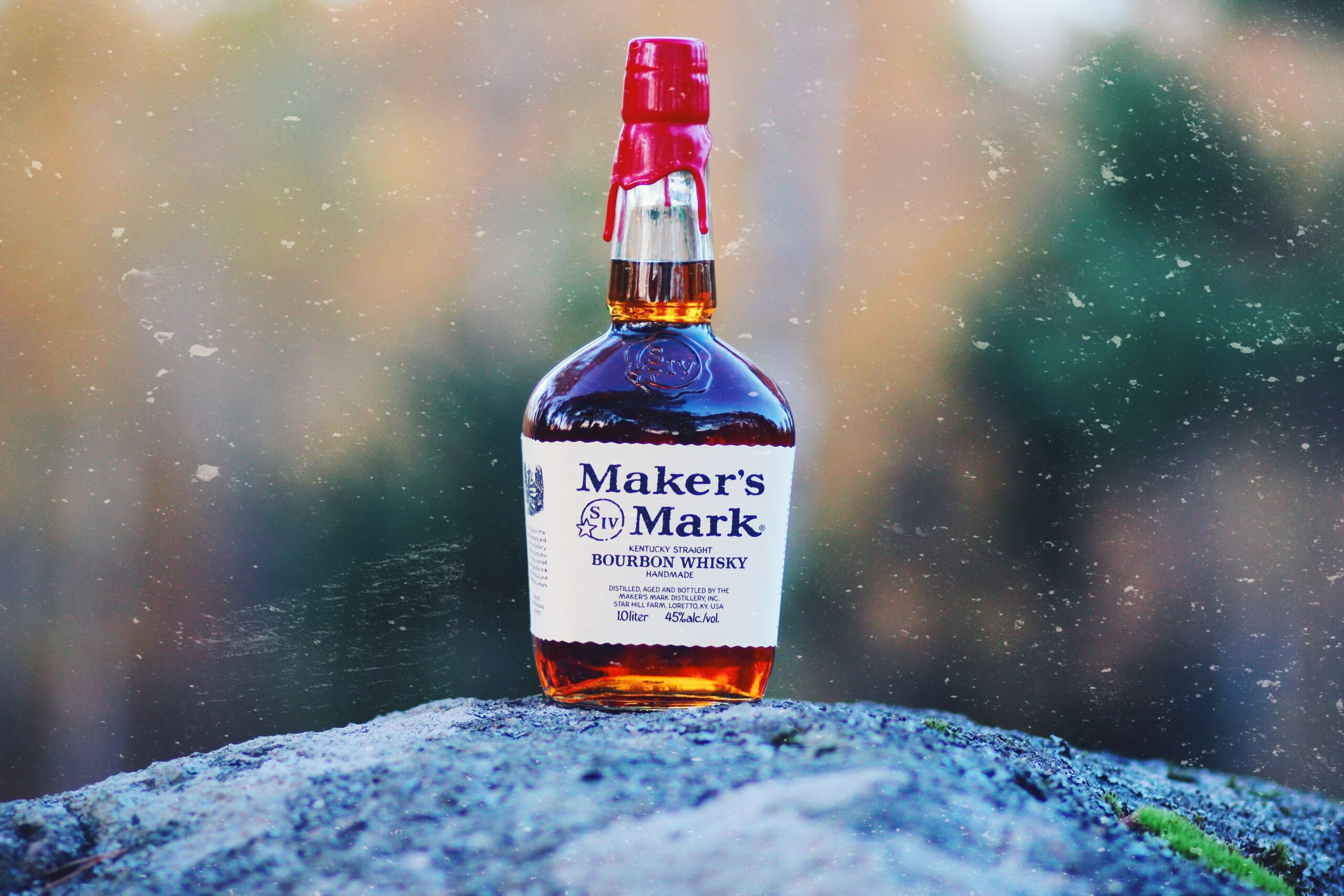It takes a long time to make great whiskey, years upon years waiting for it to age and develop its own unique character in the barrel. As the big liquor industry continues to grow, whiskey distillers are considering not only the time it takes, but also the immense amount of energy required, energy that takes a toll on the environment. From sourcing and agricultural production of crops to the vast amount of resources used and waste generated during the fermentation and distillation processes, all the way to product transportation and the long-term impact of the packaging, big liquor has a BIG footprint and a big responsibility to green it up. World class brands like Maker’s Mark, Jim Beam and Jack Daniel’s are leading the charge to build a more sustainable future for big liquor, for the planet, and for the whiskey in your glass.
Rocks or not, what makes a whiskey a whiskey? The alcohol in question is distilled from fermented grain mash made of varying combinations of barley, corn, rye, and wheat. It is typically aged in wooden casks, often fashioned from charred white oak, giving whiskey that lovely caramel hue. From whiskey to whisky to bourbon and rye, there are a few tricks to knowing your way around the trade. All whiskey is whisky and vice versa, with or without the “e,” just remember that in countries with an “e” in the name, there’s an “e” in the whiskey. Though 95 percent of bourbon is made in Kentucky, whiskey made anywhere in the U.S. can claim that name, so long as it meets a strict list of requirements that qualify true bourbon. The mash bill (grain recipe) must be at least 51 percent corn, it can be distilled to no more than 160 proof (80 percent alcohol by volume), it must be aged in new, charred oak barrels with no added artificial colorings or flavors, and it can’t hit those barrels at higher than 125 proof (62.5 percent alcohol by volume). American rye whiskey is not bourbon as it must be made with at least 51 percent rye. It drinks like bourbon’s older sister, spicy, with a dry sense of humor.
Following Prohibition, the federal government determined guidelines for what continue to be the four main kinds of American whiskeys: bourbon, rye, malt and wheat. Woodford Reserve is the first major distiller to make all four. Tennessee whiskey is a whole ‘nother story. Andy Nelson, Founder and Head Distiller at Nelson’s Green Brier Distillery believes the best things in life are simple and he extends that to barrel and glass. “Tennessee whiskey, in simple terms, is bourbon plus.” What’s the plus? It undergoes the charcoal mellowing process, one that distillers like Jack Daniel’s are learning to make more environmentally friendly by extending the life of charcoal mellowing vats and decreasing the amount of sugar maple needed to keep them running.
In whiskey making, everything has its effect. The Distilled Spirits Council of the United States has a list of best practices from “field to bottle,” setting the industry-wide goal of maximizing resource utilization and eliminating waste at every step. To do this, distillers must be dedicated to land stewardship, responsible water use, energy reduction, circular material syncing, waste reduction and evaluating transport burdens. With consumers increasingly interested in where their food and beverages come from, sustainability practices make for good business. This new awareness is suffusing corporate and social responsibility discussions, catalyzing producers of all sizes to explore more sustainable production methods.
Consumer interest in source is not all that’s been growing. Distillers are becoming more invested in the concept of terroir, borrowing from centuries of winemaking wisdom. Terroir attributes the unique taste and experience of a wine or whiskey to the land and weather where the spirit originates, from seed to final bottling. In other words the surrounding environment and its health or lack thereof, has a significant effect on the quality of a whiskey. It’s not hard to imagine why when considering the elemental makeup of the spirit. It comes down to water, grain, and a little yeast. An example of terroir at its finest, Maker’s Mark sources all of its water onsite from two calcium and magnesium-rich lakes purified by a limestone shelf below the water that filters out iron and contributes to the bourbon’s distinctive flavor. The distillery works hard to protect its land and natural resources, maintaining state-of-the-art waste management and recycling practices, including an anaerobic digestion facility that converts stillage to energy that can be used to offset natural gas needs.
Just a few paces north on the Bourbon Trail, 15,625 acres of privately held forest line the border of the Jim Beam distillery, and there, with the Bernheim Arboretum & Research Forest, Jim Beam has established a natural water sanctuary to protect the land and surrounding resources. They’ve extended their environmental care to The Jim Beam American Stillhouse, building it of 25 percent recycled materials and making sure 79 percent of all construction waste never saw a landfill, recycling it instead. Their use of water-saving faucets and flush toilets saves them 50 percent annually in water usage, and they’ve earned a LEED Gold Certification from the U.S. Green Building Council. The spirit of sustainability is alive and well along the Bourbon Trail. In Kentucky, all bourbon barrels find a second, third or permanent use, whether to be filled with another distilled spirit or refashioned into furniture on a southern facing porch and many distillers, along with Jim Beam, work only with suppliers who procure the white oak sustainably.
Down south in Tennessee, Cascade Blonde is giving American Whiskey a new name, or at least a new role as an outdoor summertime porch sipper. This lighter-colored whiskey comes from a unique double chill filtering, finished off with Tennessee limestone-filtered spring water, making it exceptionally crisp and refreshing. Again, with this whiskey, water is king and Diageo, Cascade Blonde’s parent company, knows it. A global leader in big liquor with a powerful roster including Johnny Walker, Talisker, Guinness, Bailey’s, Smirnoff and Tanqueray, Diageo has a major sustainability focus that includes water stewardship, clean energy, sustainable packaging and zero landfill waste. Cascade Blonde Whiskey has joined forces with American Rivers, a river conservation organization, hosting nation-wide waterway cleanup events to make sure we can all enjoy that smooth Tennessee whiskey for years to come.
So next time you’re trading stories around the fire or shooting shots of Fireball with some friends, throw a little enviro-trivia into your bourbon tale because you know that Wild Turkey is non-GMO.





